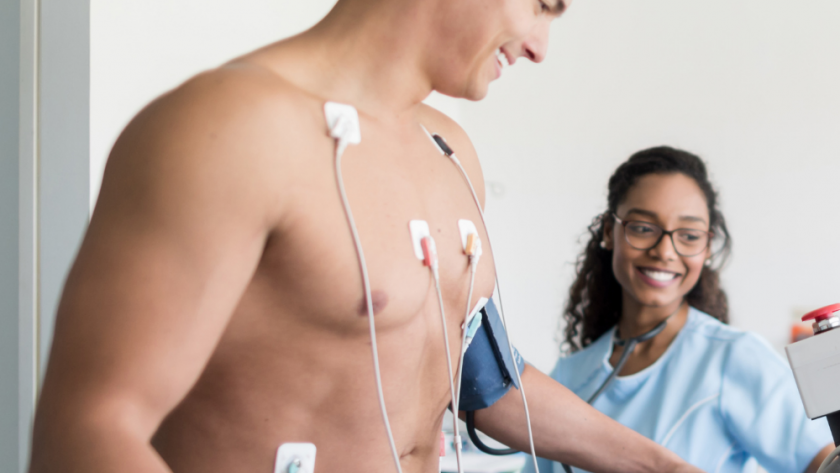Finding the source of new or increasing chest discomfort, categorizing risk for heart disease, determining how effective therapy is proceeding, and monitoring healing after a heart attack are all possible outcomes of nuclear stress tests. You get everything done in the office thanks to nuclear stress testing in Port Saint Lucie at TLC Medical Group Inc. EKG, heart rate, and blood pressure is measured as you walk on a treadmill during a stress test. In conjunction with the EKG, heart rate, and blood pressure, a nuclear stress test provides images of the blood supply to the heart muscle.
Exam Preparation: How to Do It
Wear loose-fitting, non-slip clothing and footwear. Would you mind refraining from consuming any food or beverages after midnight? If you need to take medication, you may drink a few sips of water. Before the test, you must refrain from consuming caffeine for at least 24 hours. It includes:
- Coffee and tea.
- Some pain medications and drinks, including those labeled caffeine-free, contain caffeine.
- Blood test results might be affected by a wide range of medications.
Before this test, your healthcare practitioner will notify you whether you should stop taking any medications.
What to Anticipate on the Day of the Examination
During a nuclear stress test, pictures of your heart may be taken whenever it is at rest and while it is undergoing physiological exertion. After putting on a hospital gown, electrodes will be attached to your chest for the test to begin. At rest and when exercising, these electrodes allow you to keep an eye on your heart rate. The radiotracer liquid will also be administered into your arm via an IV.
You will progressively raise the pace and slope on the treadmill until you achieve the desired activity level. The doctor will administer a radiotracer using a diagnostic “camera” to take photos of your heart and blood vessels after attaining that degree of cardiac activity. The doctor will take pictures of your heart after a rest time.
Both sets of photos will be evaluated and compared by your doctor after your examination. Pictures of your heart’s activity may demonstrate how well it pumps blood both at rest and while you are moving. A thorough examination of the images will let your doctor determine whether your heart is operating correctly or if there are regions of damage that may be compromising the blood flow or cardiac function.
What if you cannot go out and work out? Finally, the doctor may inject a specific drug that mimics the impact of exercise before taking those photographs. You will be provided preparation instructions before your test date so that you may arrive at the testing center prepared. For example, if your blood pressure is high, you may be asked to refrain from eating before the test, or you may be asked to wait until after the test before taking certain medications. If you have any queries, do not hesitate to get in touch with the office.
Afterward, a Nuclear Stress Test
Stand motionless for a few seconds and afterward lie down for a minute with the monitor in position once you have finished exercising. As your breathing and heart rate return to normal, your doctor will be able to monitor for any issues.
Unless your doctor specifically instructs you differently, you can resume your usual activities after completing the test. It is natural for the radioactive tracer to get out of your system through your urine or feces. Help flush the tracer from your system by drinking a lot of water!



